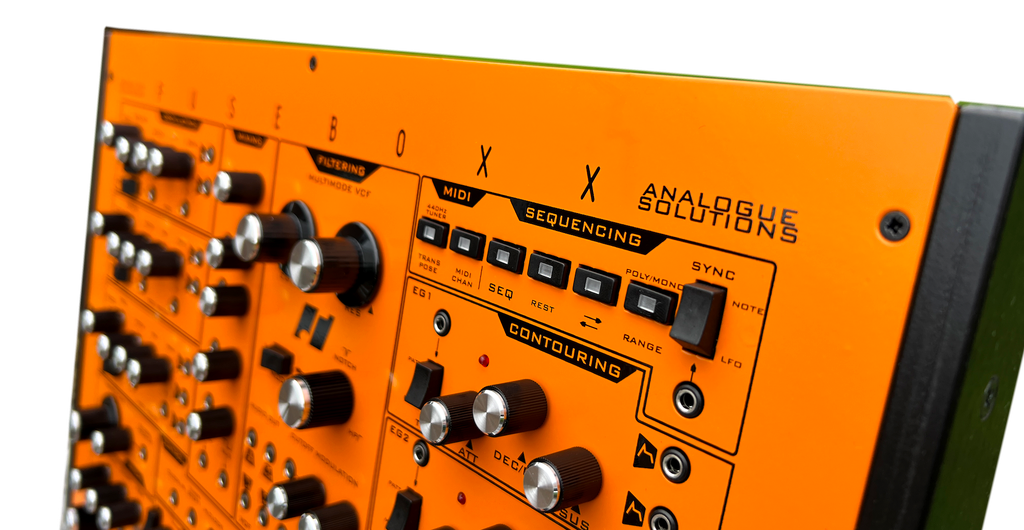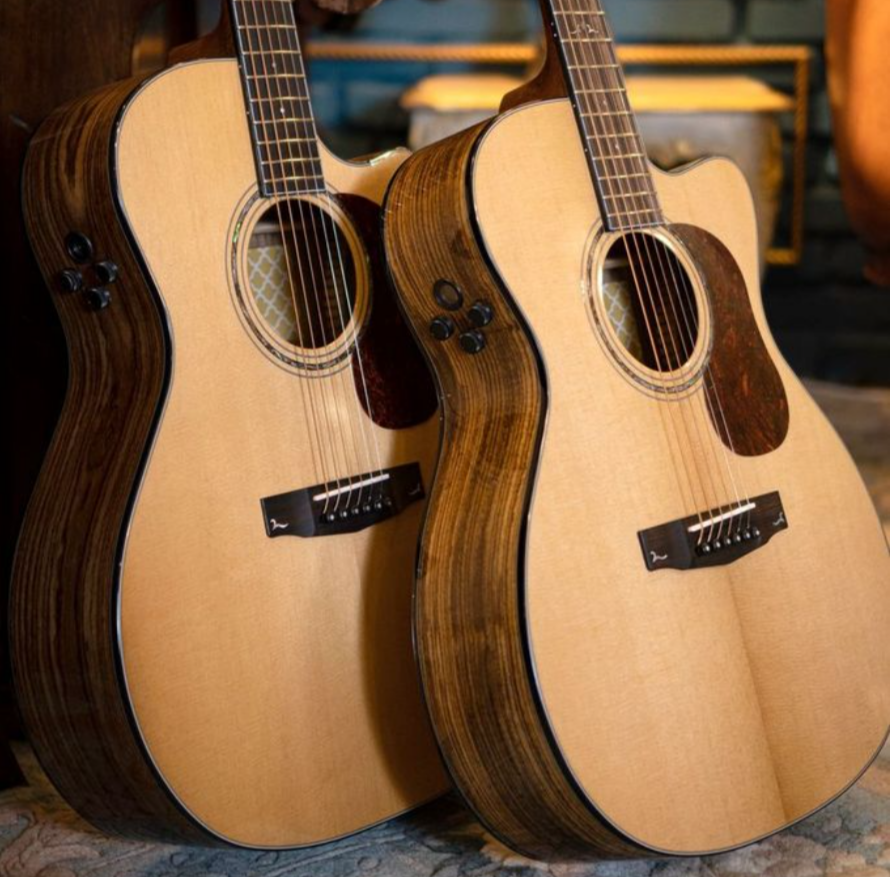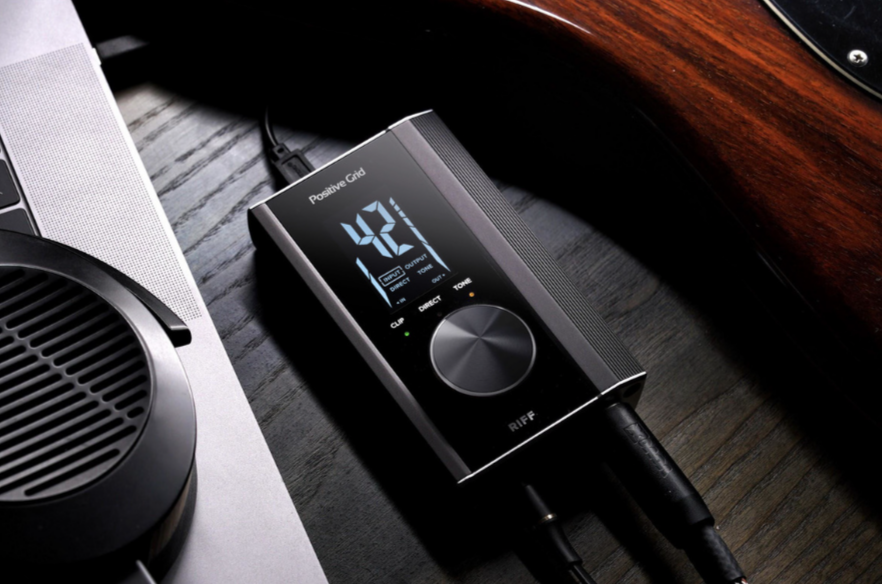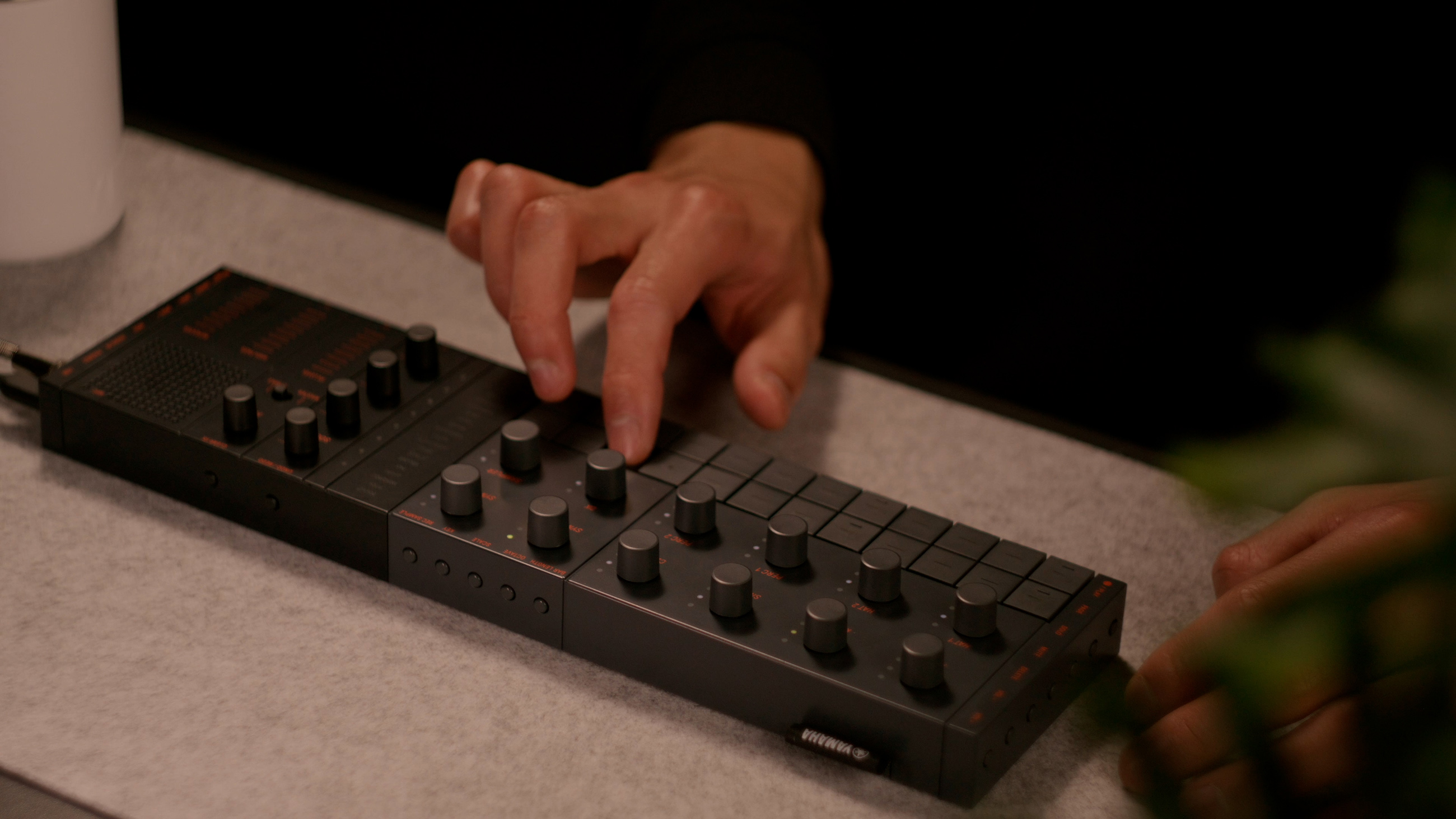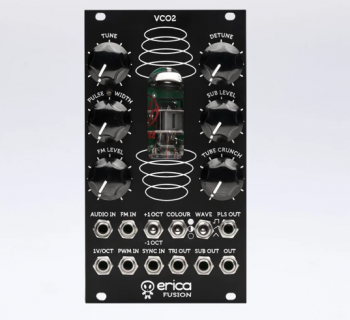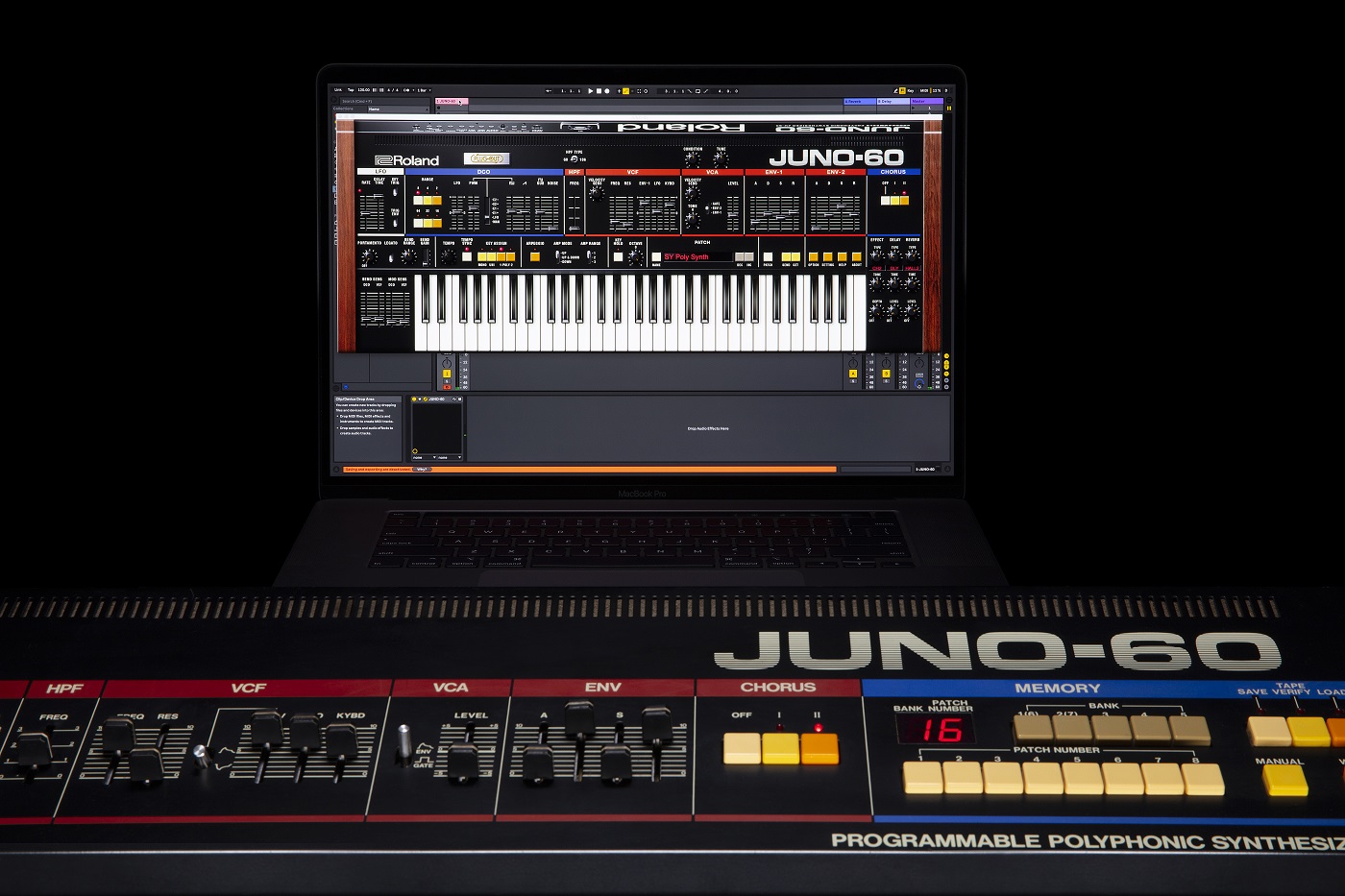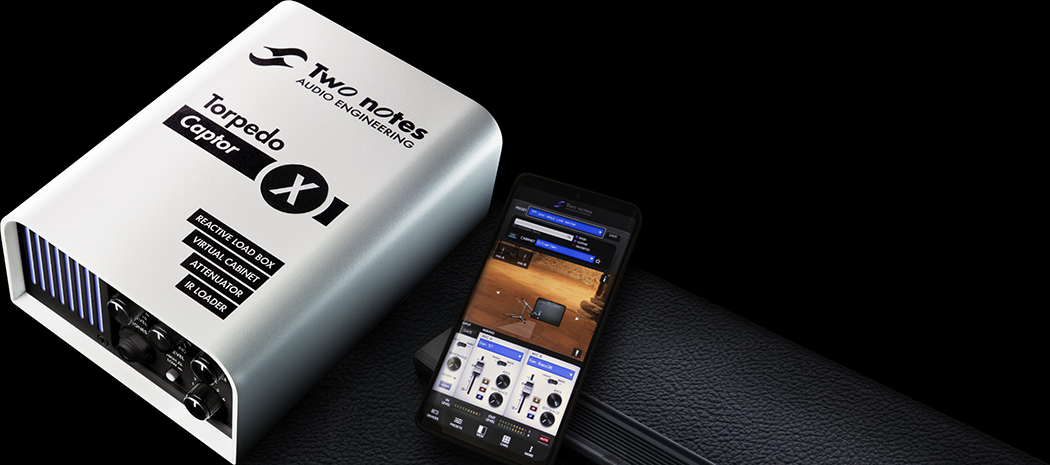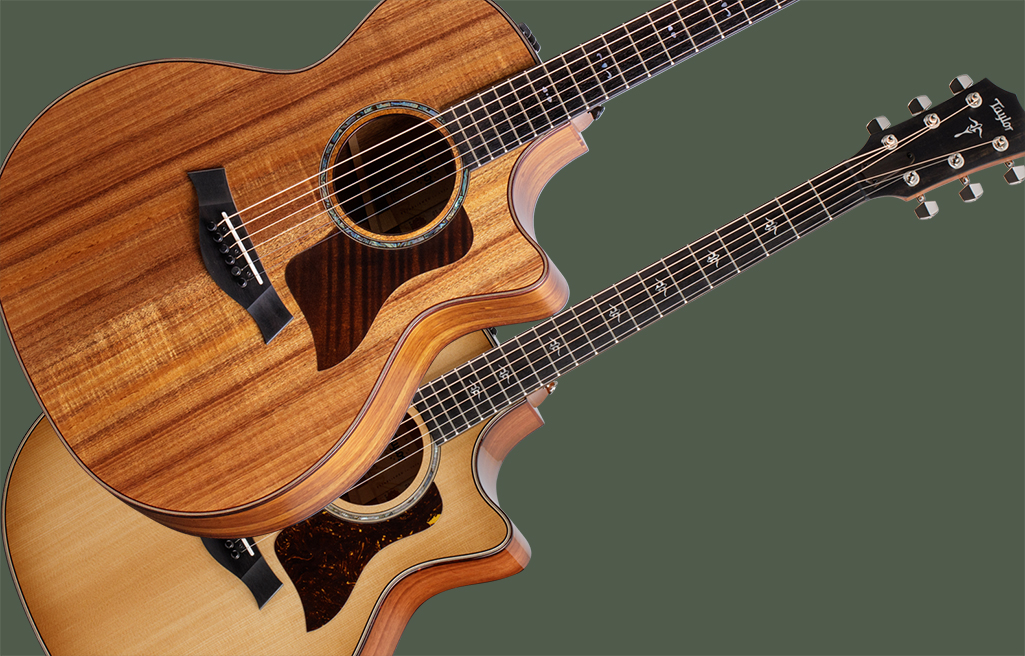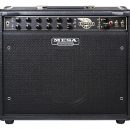![]() KINGSWINFORD, UK: Following hot on the heels of its (discontinued) award-winning Fusebox true analogue monophonic synthesiser putting into practice the REAL ANALOGUE VOICE & MODULATION CIRCUITS wording boldly blazoned across its brightly-coloured orange panel that surely stood out from (the sound) of the crowd, British boutique electronic instruments innovator Analogue Solutions is proud to announce availability of its Fusebox X followup — featuring the same general (three-VCO/multimode filter, etc.) specification as the original as a readily released reincarnation bolstered by a three-note polyphonic mode alluded to in its tidied up front panel’s ANALOGUE 3 VOICE POLYSYNTHESISER wording, as well as several new features and many internal performance tweaks — as of January 19…
KINGSWINFORD, UK: Following hot on the heels of its (discontinued) award-winning Fusebox true analogue monophonic synthesiser putting into practice the REAL ANALOGUE VOICE & MODULATION CIRCUITS wording boldly blazoned across its brightly-coloured orange panel that surely stood out from (the sound) of the crowd, British boutique electronic instruments innovator Analogue Solutions is proud to announce availability of its Fusebox X followup — featuring the same general (three-VCO/multimode filter, etc.) specification as the original as a readily released reincarnation bolstered by a three-note polyphonic mode alluded to in its tidied up front panel’s ANALOGUE 3 VOICE POLYSYNTHESISER wording, as well as several new features and many internal performance tweaks — as of January 19…
Putting into practice the REAL ANALOGUE VOICE & MODULATION CIRCUITS wording boldly blazoned across its brightly-coloured orange panel fronting a no- compromise steel/aluminium-constructed casing (with no plastic mouldings) that surely stood out from (the sound) of the crowd — to partially paraphrase the early- Eighties British breakthrough hit from synth-pop pioneers The Human League (who have a soft spot for Analogue Solutions synthesisers themselves) — patently paid dividends for Analogue Solutions as its Fusebox true analogue monophonic synthesiser scooped several awards after its 2017 launch. Little surprise there, though, since analogue as in really analogue sounds amazing, after all! Aside from the MIDI-to-CV circuit, which, by its very nature, must include a digital element, everything else is absolutely analogue; for the Fusebox concept trades on real transistors and op-amps — no CPU (Central Processing Unit) stabilised and quantised circuits, no DCOs (Digitally-Controlled Oscillators), and no digital EGs (Envelope Generators), as is often the case with many so-called analogue synthesisers. Since the circuitry is based on designs dating back to the mid-Seventies, Fusebox proudly possesses a truly vintage sound that is truly the kind of sound that The Human League — and many others, of course — made their own and continue to trade on to this day during an analogue renaissance that is still showing no signs of abating anytime soon following last month’s (mainly) sold-out (mainly) arena-visiting UK tour.
 Some say practice makes perfect. Readily releasing the Fusebox X ANALOGUE 3 VOICE POLYSYNTHESISER as a timely reincarnation of its award-winning Fusebox true analogue monosynth predecessor, but bolstered by a three-note polyphonic mode alluded to in its tidied up front panel’s wording, as well as several new features and many internal performance tweaks, Analogue Solutions’ striving towards analogue perfection is also showing no signs of abating anytime soon. After all, the British boutique electronic instruments innovator has not long launched its Limited Edition BLACK Colossus supersized synth, symbolising so much more than a powerful analogue ‘workstation’ with no fewer than 12 VCOs (Voltage-Controlled Oscillators) beating at its monumental musical heart — rather representing art, architecture, and superlative studio furniture at its hand-built best, but back this time as a limited-edition run of 20 units with a black-coloured panel scheme in complete contrast to the still-available Colossus.
Some say practice makes perfect. Readily releasing the Fusebox X ANALOGUE 3 VOICE POLYSYNTHESISER as a timely reincarnation of its award-winning Fusebox true analogue monosynth predecessor, but bolstered by a three-note polyphonic mode alluded to in its tidied up front panel’s wording, as well as several new features and many internal performance tweaks, Analogue Solutions’ striving towards analogue perfection is also showing no signs of abating anytime soon. After all, the British boutique electronic instruments innovator has not long launched its Limited Edition BLACK Colossus supersized synth, symbolising so much more than a powerful analogue ‘workstation’ with no fewer than 12 VCOs (Voltage-Controlled Oscillators) beating at its monumental musical heart — rather representing art, architecture, and superlative studio furniture at its hand-built best, but back this time as a limited-edition run of 20 units with a black-coloured panel scheme in complete contrast to the still-available Colossus.
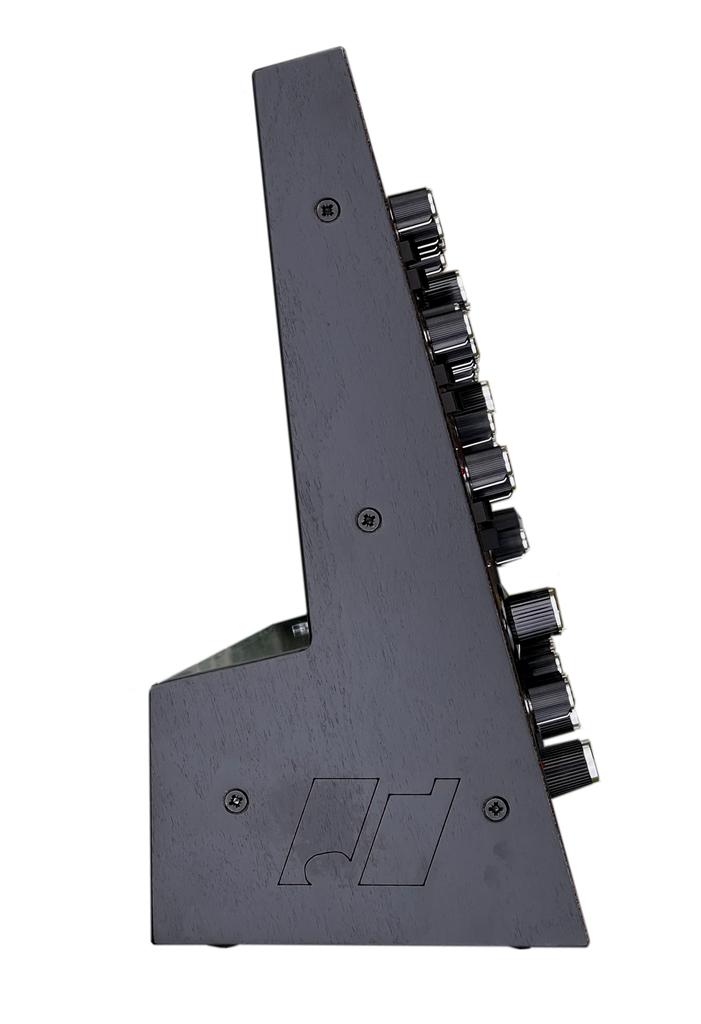 Clearly, Fusebox X likewise wears its colours well with Analogue Solutions’ sought-after synth sound shining through. There are three VCOs beating at its musical heart, here is a precision electronic musical instrument that combines must-have electronic circuitry to create a powerful synthesiser statement seriously housed in an eye- catching, compact box. But this is to be expected given its industry pedigree, perhaps, for Fusebox X is, likewise, designed by Analogue Solutions founder Tom Carpenter. As a fervent fan of electronic music and also an active electronic musician himself, he naturally knows a thing or two about programming synthesisers, so, again, his latest creation is not the result of engineering design decisions alone — nor driven by a steering committee of men (or woman) in suits. So what, exactly, is going on inside this beautifully-built box of subtractive synthesis tricks, then?
Clearly, Fusebox X likewise wears its colours well with Analogue Solutions’ sought-after synth sound shining through. There are three VCOs beating at its musical heart, here is a precision electronic musical instrument that combines must-have electronic circuitry to create a powerful synthesiser statement seriously housed in an eye- catching, compact box. But this is to be expected given its industry pedigree, perhaps, for Fusebox X is, likewise, designed by Analogue Solutions founder Tom Carpenter. As a fervent fan of electronic music and also an active electronic musician himself, he naturally knows a thing or two about programming synthesisers, so, again, his latest creation is not the result of engineering design decisions alone — nor driven by a steering committee of men (or woman) in suits. So what, exactly, is going on inside this beautifully-built box of subtractive synthesis tricks, then?
Those three VCOs, for starters — sawtooth and square waveforms available to each and all. And all have CV (Control Voltage) inputs for PITCH and PWM (Pulse Width Modulation) alongside manual PW (Pulse Width) controls. Creatively speaking, though, there are some striking variations: VCO 1 has OCT (octave) and XMOD (cross modulation) FROM VCO2 switches; VCO 2 has a WIDE TUNE (range) switch — allowing a wide tuning range (right down into low frequency territory) — alongside an oscillator SYNC FROM VCO 1 switch; VCO 3 also has a WIDE TUNE switch, together with a MIDI PITCH switch control — can be disabled to make this a free-running oscillator, ideal for modulation. Meanwhile, VCO 2 and VCO 3 can both be pressed into service as LFOs (Low Frequency Oscillators) — as announced by their respective VCO / VCLFO wording. All as it was in the original Fusebox, in other words.
Which neatly leads to the changes implemented in the Fusebox X’s adjacent MIXING section, where the four rocker switches sited there in the original Fusebox have been replaced with mini-jack sockets for flexible patching purposes. Thereafter, the all-important FILTERS section remains unchanged, centred as it is around a 12dB MULTIMODE VCF (Voltage-Controlled Filter) featuring LP (Low Pass), HP (High Pass), BP (Band Pass), and NOTCH filters and associated patch points, plus CUTOFF MODULATION controls with patch points. Flexibility further abounds at the — renamed — AMPLIFYING section with a VCA (Voltage-Controlled Amplifier) allowing for EG 2 and THRU (bypass) switching; an advanced — also renamed — MODULATING section with a FADE IN (delay)-featured LFO; and an — also renamed — CONTOURING section with two trigger option-friendly envelope generators (EG1 and EG2).
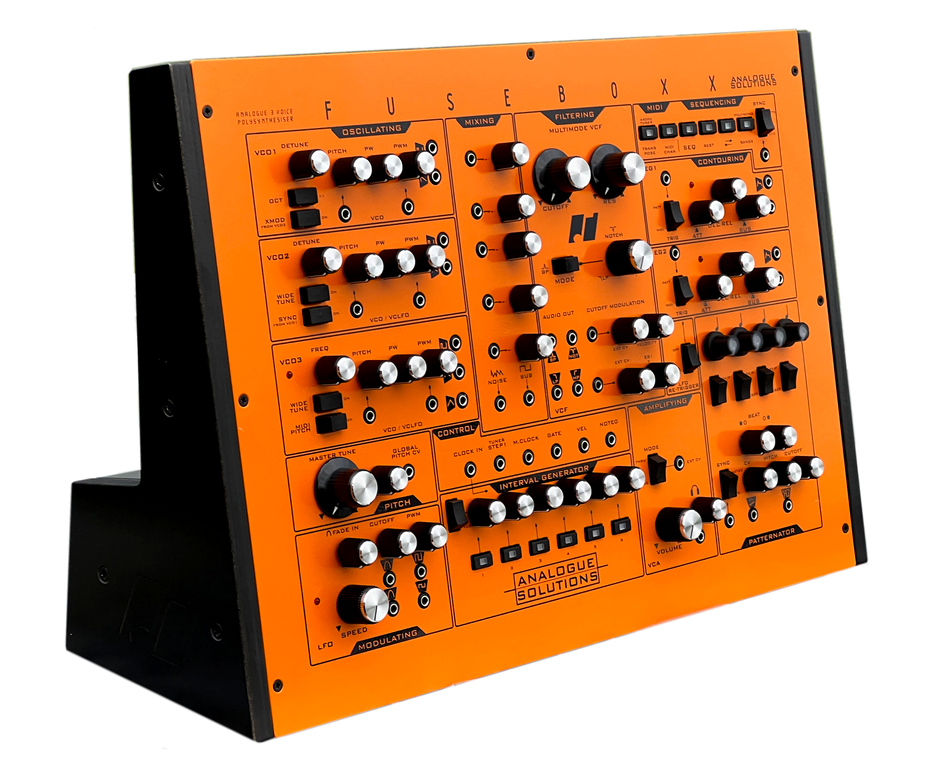 Elsewhere, the INTERVAL GENERATOR — a special type of pitch transposer that allows users to set six different pitches to each of the switches, then transpose the VCOs manually to create performances — and PATTERNATOR pots have been replaced by precision type in Fusebox X, with STEP 1 and NOTE0 trigger outputs in the associated CONTROL section serving up versatile ways to trigger the PATTERNATOR and INTERVAL GENERATOR, while the INTERVAL GENERATOR’s CLOCK IN (input) now allows automatic transposition in a variety of ways. Tweaking the original Fusebox’s design continues with its ARPEGGIATOR being replaced by the SEQUENCING section’s mini-step sequencer in Fusebox X, though there are also a wider range of playable notes available via MIDI, should users wish to play the true analogue monophonic synthesiser from an external keyboard or sequencer. Whichever way they choose to use it, the added 440Hz TUNER certainly helps when working with the British boutique electronic instrument in question.
Elsewhere, the INTERVAL GENERATOR — a special type of pitch transposer that allows users to set six different pitches to each of the switches, then transpose the VCOs manually to create performances — and PATTERNATOR pots have been replaced by precision type in Fusebox X, with STEP 1 and NOTE0 trigger outputs in the associated CONTROL section serving up versatile ways to trigger the PATTERNATOR and INTERVAL GENERATOR, while the INTERVAL GENERATOR’s CLOCK IN (input) now allows automatic transposition in a variety of ways. Tweaking the original Fusebox’s design continues with its ARPEGGIATOR being replaced by the SEQUENCING section’s mini-step sequencer in Fusebox X, though there are also a wider range of playable notes available via MIDI, should users wish to play the true analogue monophonic synthesiser from an external keyboard or sequencer. Whichever way they choose to use it, the added 440Hz TUNER certainly helps when working with the British boutique electronic instrument in question.
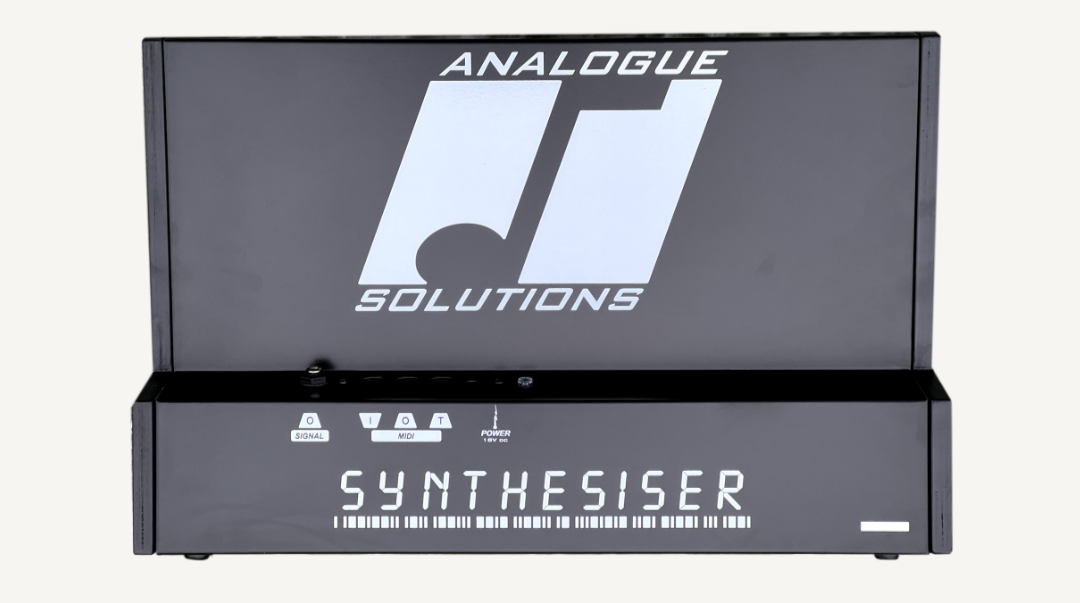 Questioning the original Fusebox design, Director Tom Carpenter’s creative additions to its Fusebox X successor certainly succeeds in imbuing an already well-received British boutique electronic instrument with further creative scope as a true analogue monosynth, albeit one which is now tri-phonic (three-note polyphonic) to boot, bolstered by more mini-jack input and output sockets, so it can be cross-patched within itself to create an almost infinite range of sounds — themselves bolstered by many internal performance tweaks — or cross-patched with other synthesisers and modular systems for further flexibility. An award-winning combination, if ever there was one!
Questioning the original Fusebox design, Director Tom Carpenter’s creative additions to its Fusebox X successor certainly succeeds in imbuing an already well-received British boutique electronic instrument with further creative scope as a true analogue monosynth, albeit one which is now tri-phonic (three-note polyphonic) to boot, bolstered by more mini-jack input and output sockets, so it can be cross-patched within itself to create an almost infinite range of sounds — themselves bolstered by many internal performance tweaks — or cross-patched with other synthesisers and modular systems for further flexibility. An award-winning combination, if ever there was one!
Pricing and Availability:
Limited quantities of Fusebox X are already available to purchase directly from Analogue Solutions for £1,350.00 GBP (excluding VAT) via its dedicated website, where black or orange (optional) rack ears are also available, here: https://www.analoguesolutions.com/fusebox-1 (As Analogue Solutions cannot ship to Austria, Belgium, France, Germany, Holland, Luxembourg, Switzerland, and the US, those territories are serviced by its growing global network of authorised dealers listed — in no particular order — here: https://www.analoguesolutions.com/dealers)

